Perpetual Pavement Performs for “Peanut Capital of the World”
BY AsphaltPro Staff
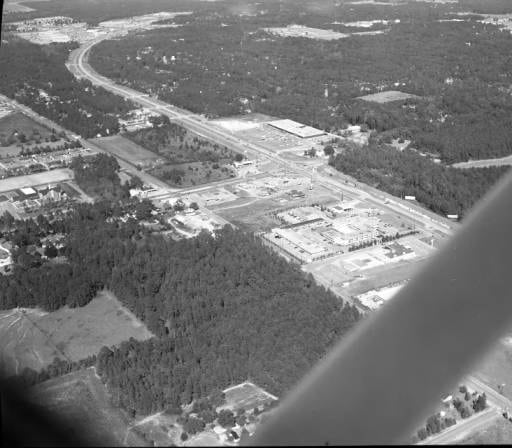
In its 63 years of service, Alabama’s State Route 210/Ross Clark Circle has only gained 3.3 inches of pavement and has been resurfaced just three times. One section of the 15-mile bypass surrounding the city of Dothan has performed so well that it earned a Perpetual Pavement Award from the Asphalt Pavement Alliance (APA).
“The pavement on this section in the City of Dothan has proven to withstand both time and traffic,” said Chris Huner, Troy area operations engineer for the Alabama Department of Transportation’s southeast region.
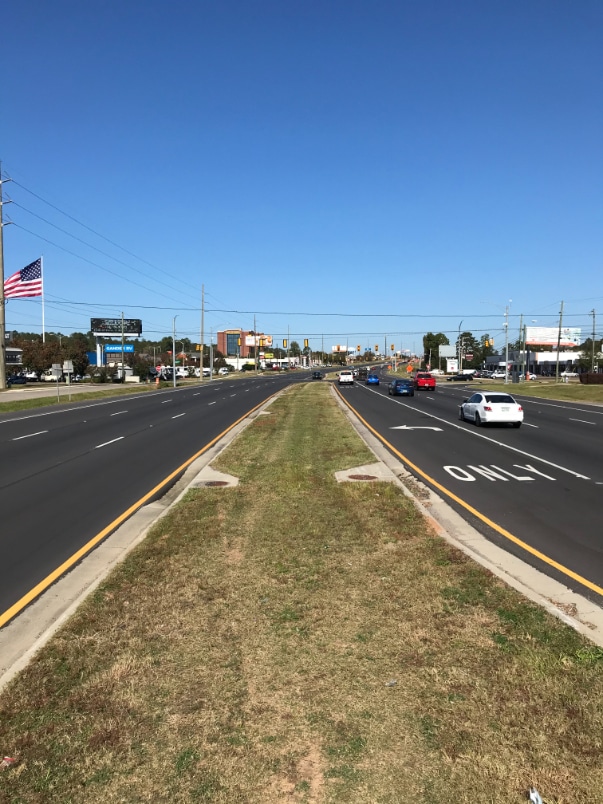
Although SR 210 has continued to hold up extremely well in its six-decade life, increased traffic required ALDOT to expand the four-lane divided highway into a six-lane divided highway on the section between U.S. 231 South and U.S. 231 North.
“The pavement on this section in the City of Dothan has proven to withstand both time and traffic.”—Chris Huner
Huner has traveled through Dothan for decades, long enough to watch the city grow and change. When SR 210, known to locals as “The Circle,” was first opened to traffic in 1958, the population of Dothan was less than half what it is today.
“Today, Dothan is one of southern Alabama’s largest population centers outside of Montgomery,” Huner said, “and the largest population center for 150 miles in each direction.” Dothan, the Peanut Capital of the World, has long been known for its agriculture. Although agriculture remains the city’s largest industry, Dothan now serves as a transportation and commercial hub for southeastern Alabama, southwestern Georgia, and parts of the Florida Panhandle.

ALDOT has been recognized with 12 Perpetual Pavement Awards from the Asphalt Pavement Alliance (APA).
It’s also the point at which several U.S. routes converge, including U.S. 231, which runs the length of Alabama, U.S. 84, which runs from Mississippi to Georgia, and U.S. 431, which brings with it a lot of traffic from the Atlanta area to the popular tourist destination of Panama City.
“The Circle is a vital route for people passing through Dothan,” Huner said, “but it’s also vital to the growth and development of the city as well.”
ALDOT’s southeast region encompasses nine counties in Alabama, including Houston County, where the award-winning pavement is located.
Asphalt Pavement Alliance Now Accepting 2021 Perpetual Pavement Award Nominations
Perpetual Pavement, Past
APA’s Perpetual Pavement Award recognizes agencies and owners whose pavements demonstrate the characteristics of a long-lasting pavement: excellence in design, quality in construction and value to taxpayers. Since the awards began in 2001, the program has recognized 156 long-life pavements in 31 U.S. states and one Canadian province.
“The advantages of these perpetual pavements are significant,” said Amy Miller, P.E., national director of the APA. “Life-cycle costs are lower because deep pavement repairs and reconstruction are avoided. User delays are reduced because minor surface rehabilitation requires shorter work windows and can avoid peak traffic hours. And there are environmental benefits because minimal rehabilitation, combined with recycling any materials that are removed from the pavement surface, reduces the amount of material resources required over the pavement’s life.”
“NCAT has been a great resource for us. I think the whole roadway system in the state of Alabama benefits from having NCAT in our state.”—Chris Huner
To qualify for a Perpetual Pavement Award, a pavement must be at least 35 years old and have never experienced a structural failure, with the average interval between resurfacing no less than 13 years.
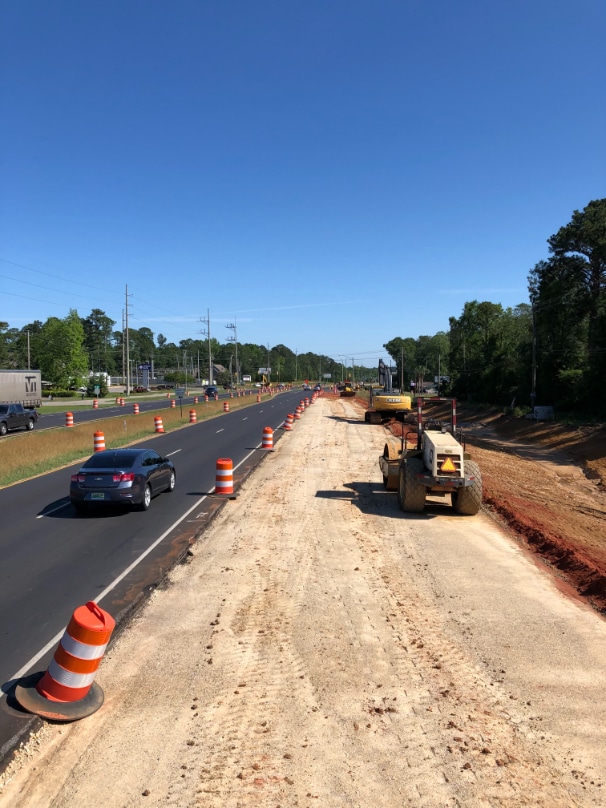
When ALDOT released the bid for the expansion of SR 210 from four lanes to six in 2019, it tried to match the existing pavement structure that had performed so well.
Not only did the 5-mile section of SR 210 meet those requirements, it exceeded them. The average interval between resurfacing is 20 years.
SR 210 was first opened to traffic in 1958. The original road consisted of 6 inches of compacted soil subbase, 6 inches of compacted granular base, 4 inches of compacted soil aggregate base, 2.3 inches of asphalt binder course, and 0.7 inches of asphalt wearing course. This provided a total asphalt thickness of 3 inches.
In 1980, 22 years later, ALDOT performed its first resurfacing of the road, placing a 0.5-inch surface treatment, followed by a 0.5-inch leveling course, and a 0.9-inch wearing course for a total thickness of 4.9 inches.
In 1999, the road was resurfaced again. The contractor milled 2.75 inches off the existing surface and placed a 2.75-inch binder course and a 1.4-inch wearing course for a total thickness of 6.3 inches.
The most recent resurfacing occurred in 2018, when 1.4 inches were milled from the existing pavement and replaced with a 1.4-inch wearing course, with the total thickness remaining 6.3 inches.
Perpetual Pavement, Future
Although SR 210 has continued to hold up extremely well in its six-decade life, increased traffic required ALDOT to expand the four-lane divided highway into a six-lane divided highway on the section between U.S. 231 South and U.S. 231 North.
“When The Circle was first built, it was outside the city limits, but the city has grown beyond The Circle,” Huner said. “Now, it’s more of an urban freeway.”
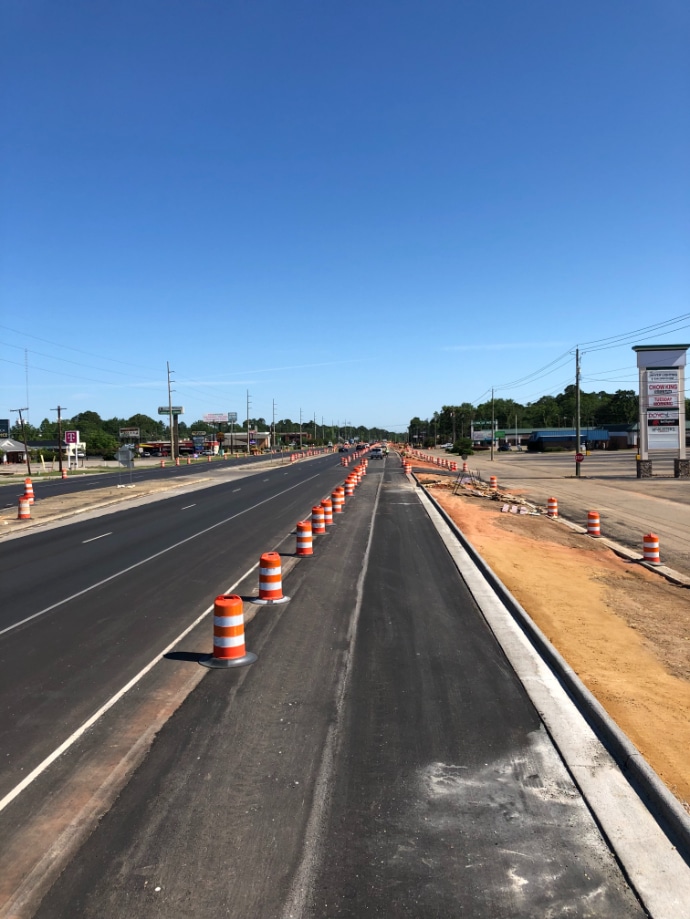
The new lanes consist of 6 inches of crushed aggregate base and 6.3 inches of asphalt: a 3-inch binder course, a 2-inch upper binder course, and a 1.3-inch wearing course. The contractor also milled 1.3 inches on the existing four lanes before placing the same 1.3-inch wearing course on those lanes, too.
Although ALDOT doesn’t have the average annual daily traffic figures from when the road was first built, Huner’s department extrapolated backwards based on traffic growth trends in the area, based on the past 40 years of data. He estimates the original AADT to be around 15,000 with 7 percent truck traffic. Now, the award-winning section of the road accommodates an AADT of 40,000 with 8 percent truck traffic.
When ALDOT released the bid for the expansion in 2019, it tried to match the existing pavement structure that had performed so well. The contractor, Midsouth Paving, Birmingham, Alabama, placed 6 inches of crushed aggregate base and 6.3 inches of asphalt: a 3-inch binder course, a 2-inch upper binder course, and a 1.3-inch wearing course. The contractor also milled 1.3 inches on the existing four lanes before placing the same 1.3-inch wearing course on those lanes, too.
“The remaining 8 miles of The Circle continue to hold up well under moderate to heavy traffic,” Huner said, adding that they were not included in ALDOT’s Perpetual Pavement Award submission because their traffic count did not meet the award’s criteria.
“Expanding the western half of The Circle to six lanes is part of our long term plan, but we started with the busiest section of The Circle,” Huner said. “In the meantime, ALDOT will continue to maintain and resurface the other sections so they will continue to provide a high level of service.”
If the rest of SR 210 continues its historic high performance as traffic counts increase, perhaps ALDOT will bag another Perpetual Pavement Award. To date, ALDOT has won 12 Perpetual Pavement Awards, two of them within the Troy area of the southeast region.
The Secret of Long-Lasting Pavements
Huner said the success of SR 210—and ALDOT’s 11 other Perpetual Pavement Award winners—can be attributed to several factors, including quality materials, preventative maintenance and quality contractors.
“One thing that helped this road last is the high quality subgrade material below,” he said. “Having 12 to 16 inches of base has shown the value of a quality base to the life of the pavement. Roads built today don’t get 16 inches of base; the funding just doesn’t allow that.”
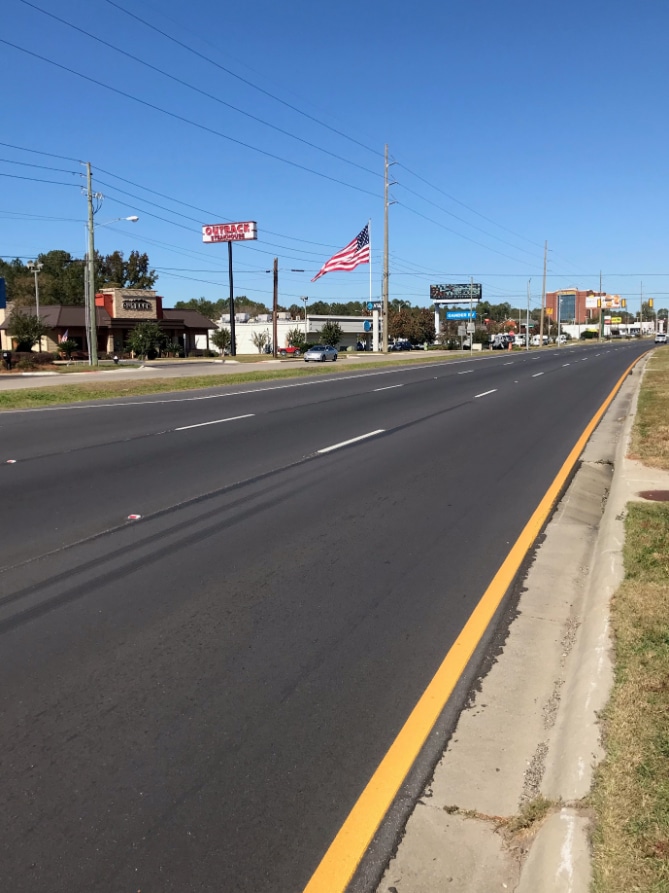
In its 63 years of service, Ross Clark Circle has gained just 3.3 inches of pavement.
Huner also credits ALDOT’s maintenance strategy, which is divided into preventative maintenance and minor rehabilitation. Preventative maintenance is further divided into two subcategories. PM1 includes crack sealing, seal coats, chips seals, and thin overlays up to 1 inch. PM2 includes wearing surfaces up to 2 inches. Minor rehabilitation includes milling up to 5 inches and placement of a binder layer and wearing surface. ALDOT plans for PM1 projects on pavements five to seven years old, and PM2 projects around 12 to 15 years old.
Huner thinks the key to Alabama’s success with perpetual pavements is a result of its relationship with the state’s asphalt industry. “We have a good working relationship between ALDOT and the asphalt paving community,” he said. “They are subject matter experts, we hire them to help us maintain our roads, and they do a very good job.”
The involvement of the Alabama Asphalt Pavement Association is also helpful. “They are very involved and regularly offer input on construction best practices,” Huner said. Proximity to the National Center for Asphalt Technology in Auburn, Alabama, has also helped. “ALDOT has been involved in a lot of NCAT research projects, and NCAT has been a great resource for us. I think the whole roadway system in the state of Alabama benefits from having NCAT in our state.”
Pair those factors with high quality continuing education and training opportunities for their engineers and a solid quality control program for asphalt pavements dating back to the ’90s, Huner said, and you’ve got a recipe for long-lasting asphalt pavements that wins again and again.
“The benefit of long lasting pavements is that we don’t have to impede traffic as often to repair the road and we can spend that money to resurface more lane miles,” Huner said. “We’re very proud of the performance of [SR 210], we’re very proud to have won the award, and we’re proud to have provided a high level of service to the traveling public.”
